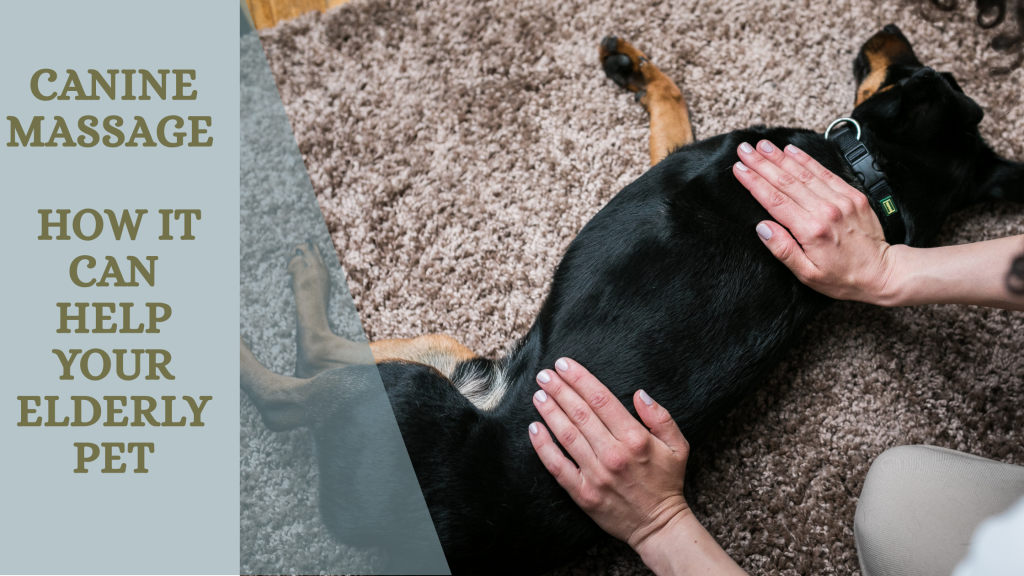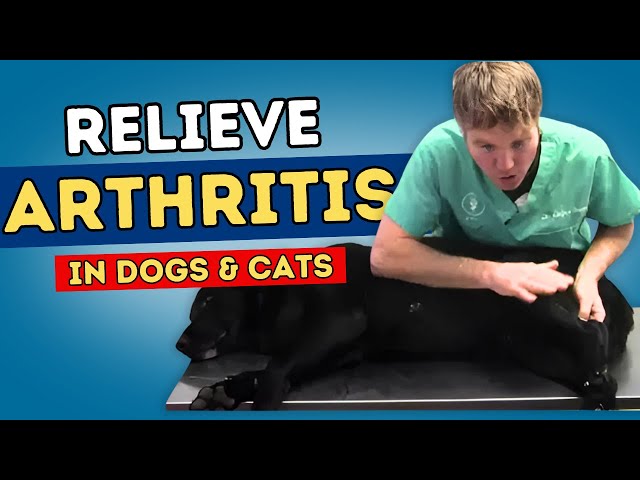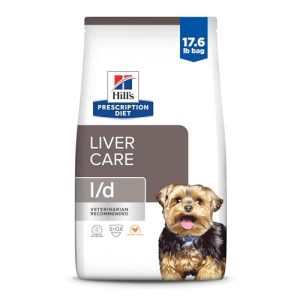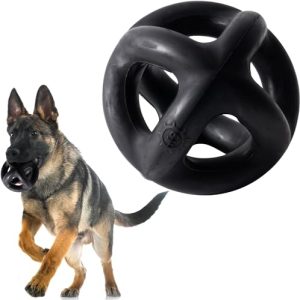If your dog suffers from arthritis, you know how painful and frustrating it can be for both of you. You want to help your furry friend feel better, but you might not know where to start.
Massaging your dog with arthritis can ease their pain, improve mobility, and strengthen your bond. You’ll discover simple, effective massage techniques that you can do at home. By the end, you’ll feel confident in giving your dog the relief and comfort they deserve.
Keep reading—your dog’s happier, healthier days are closer than you think.

Credit: www.dignipets.co.uk
Recognizing Canine Arthritis
Recognizing canine arthritis early helps improve your dog’s comfort. Arthritis causes joint pain and stiffness. Dogs may hide their discomfort, making it hard to see.
Knowing the signs allows you to act fast. You can then use gentle massage to ease pain. Understanding causes helps prevent further joint damage.
Common Symptoms
- Stiffness after rest or sleep
- Reluctance to climb stairs or jump
- Limping or favoring a leg
- Less interest in playing or walking
- Swelling or warmth around joints
- Changes in behavior, like irritability
- Difficulty getting up from lying down
Causes And Risk Factors
- Age: Older dogs have higher risk
- Breed: Some breeds prone to joint issues
- Injury: Past joint injuries increase risk
- Obesity: Extra weight stresses joints
- Genetics: Family history may play a role
- Joint infections or inflammation
- Poor nutrition or lack of exercise
Benefits Of Massage For Arthritic Dogs
Massage offers many benefits for dogs with arthritis. It helps ease their discomfort and improves their quality of life. Regular massage supports their joints and muscles. It also helps dogs feel calm and loved. Understanding these benefits encourages pet owners to care for their arthritic dogs better.
Pain Relief
Massage helps reduce pain by relaxing tight muscles around joints. It increases blood flow, which speeds up healing. Gentle pressure lowers stiffness and soothes sore areas. This natural pain relief decreases the need for medicines in some cases. Dogs often show less limping and more comfort after massage.
Improved Mobility
Massage keeps joints flexible and muscles strong. It breaks down scar tissue that limits movement. Dogs can move more easily and with less effort. Regular sessions help maintain better range of motion. This leads to more activity and less stiffness in daily life.
Enhanced Bonding
Massage time creates a special moment between you and your dog. It builds trust and strengthens your relationship. Dogs feel safe and cared for during massage. This closeness helps reduce anxiety and stress in arthritic dogs. Your dog will look forward to these gentle touch sessions.
Preparing For A Dog Massage
Preparing for a dog massage is important for its success. It helps your dog relax and enjoy the experience. A good setup makes the massage more effective for dogs with arthritis. Focus on comfort and safety before you begin.
Creating A Calm Environment
Choose a quiet place with few distractions. Dim the lights to create a peaceful mood. Speak softly to soothe your dog. Use a comfortable surface like a soft mat or bed. Keep the area warm, as cold can worsen arthritis pain.
Tools And Supplies Needed
- Soft towel or blanket to lay your dog on
- Massage oil or lotion made for pets (optional)
- Brush or comb to remove loose fur before massage
- Treats to reward calm behavior
- Timer to keep massage sessions short and focused
Safety Precautions
Check your dog’s health before starting. Avoid areas with open wounds or sores. Use gentle pressure only. Stop if your dog shows signs of pain or discomfort. Consult your vet about massage techniques and frequency. Keep sessions short to prevent fatigue.

Credit: www.simonvetsurgical.com
Basic Massage Techniques
Understanding basic massage techniques can make a big difference in easing your dog’s arthritis pain. These simple strokes help improve blood flow, reduce stiffness, and promote relaxation. You don’t need to be a professional—just gentle, consistent practice can bring comfort to your furry friend.
Effleurage Technique
Effleurage involves gentle, sweeping strokes along your dog’s body. Use the flat part of your hand to stroke from head to tail in smooth, slow motions. This technique helps warm up the muscles and prepares your dog for deeper massage.
Try paying attention to how your dog responds—do they lean into your hand or seem more relaxed? This feedback guides you on the pressure and speed that suits them best.
Petrissage Method
Petrissage means kneading the muscles gently with your fingers and thumbs. Imagine you’re softly squeezing and lifting the muscle tissue to release tension. This technique can reduce stiffness and improve muscle elasticity around arthritic joints.
Start with light pressure and increase gradually, always watching for signs of discomfort. It’s like giving your dog a gentle muscle workout that helps keep joints mobile.
Friction Technique
Friction involves small, circular movements using your fingertips over tight or sore spots. This method targets deeper layers of tissue and helps break down knots or adhesions. Use this carefully around joints affected by arthritis to avoid causing pain.
Focus on areas your dog shows sensitivity but don’t push through resistance. Think of it as a focused approach to encourage healing without strain.
Targeting Specific Areas
Massaging a dog with arthritis requires you to focus on the areas where they feel the most discomfort. Targeting specific spots can bring relief and improve their mobility. Paying attention to your dog’s reactions while massaging helps you understand what works best for them.
Neck And Shoulders
The neck and shoulders often hold tension, especially if your dog struggles to move comfortably. Use gentle, circular motions with your fingertips to ease stiffness. Watch for signs of relaxation, like softening muscles or calm breathing, which tell you the massage is helping.
If your dog pulls away or seems uncomfortable, reduce the pressure or switch to a lighter touch. Regularly massaging these areas can improve blood flow and reduce pain, making daily walks easier for your furry friend.
Hips And Lower Back
The hips and lower back are common trouble spots for arthritic dogs. Use your palms to apply slow, steady strokes along the sides of their hips and down their back. This helps loosen tight muscles and soothe joint pain.
Try to keep your dog in a relaxed position, lying on their side or sitting comfortably. If your dog enjoys it, add gentle kneading motions to stimulate circulation. Could focusing on these areas help your dog move more freely?
Legs And Paws
The legs and paws often suffer from arthritis-related stiffness. Gently stroke down each leg, starting at the top and moving toward the paws. Use your thumbs to softly massage around the joints, but avoid pressing directly on sore spots.
Don’t forget to carefully massage between the toes and pads. This can relieve discomfort and improve flexibility. Have you noticed your dog’s paws feeling colder or stiffer? Targeting these areas might make a big difference.
Signs Of Discomfort
Knowing the signs of discomfort in a dog with arthritis is essential during massage. Dogs cannot tell us with words, so reading their body language is key. Watch closely for any signals that show pain or stress. This helps keep the massage safe and pleasant for your pet.
Reading Dog’s Body Language
Look for stiff movements or sudden flinches. If your dog pulls away or tries to move, it may feel pain. Whining or growling can be signs of discomfort. Pay attention to their eyes—dilated pupils or a worried look means they are uneasy. Tail position matters too. A tucked tail often shows fear or pain. Ears laid back or pinned can signal distress. Notice any heavy panting or licking of lips, which indicate stress.
When To Stop The Massage
Stop the massage immediately if your dog shows clear signs of pain. Avoid pushing through resistance or discomfort. If your dog tries to bite or snaps, end the session at once. Watch for changes in breathing or heart rate. If these increase, it means your dog is stressed. Take breaks if your dog seems tired or restless. Always let your dog guide the pace of the massage.
Integrating Massage With Other Treatments
Massage helps ease arthritis pain in dogs but works best with other treatments. Combining massage with a full care plan improves your dog’s comfort and mobility. This holistic approach supports healing and keeps your dog active.
Dietary Supplements
Supplements can reduce joint pain and inflammation. Common ones include glucosamine, chondroitin, and omega-3 fatty acids. They support cartilage health and improve joint function. Consult your vet before adding supplements to your dog’s diet. Proper doses and quality matter for safety and results.
Physical Therapy
Physical therapy strengthens muscles around affected joints. Exercises improve flexibility and reduce stiffness. Techniques like hydrotherapy offer low-impact movement and pain relief. A professional therapist can tailor sessions to your dog’s needs. This care complements massage by enhancing joint stability.
Veterinary Consultations
Regular vet visits monitor arthritis progression and adjust treatments. Your vet can suggest medications for pain and inflammation. They also check for other health issues affecting your dog’s mobility. Open communication ensures your dog gets the best combined care. Follow vet advice alongside massage routines.

Credit: www.youtube.com
Tips For A Successful Massage Routine
Creating a successful massage routine for a dog with arthritis takes care and attention. Gentle touch helps ease joint pain and increases comfort. Regular sessions can improve your dog’s mood and mobility. Understanding how to approach each massage makes the process effective and enjoyable for your pet.
Consistency And Patience
Massage works best when done regularly. Set a schedule to massage your dog at the same time each day. Short sessions, about 5 to 10 minutes, are ideal. Patience is key. Your dog may need time to relax and trust your touch.
Watch your dog’s reactions closely. Stop if your dog shows signs of discomfort. Gradually, your dog will get used to the routine. Consistency helps muscles stay loose and joints move easier.
Adapting Techniques Over Time
Every dog’s needs change with their arthritis stage. Start with light strokes and gentle kneading. Adjust pressure as your dog becomes more comfortable. Focus on areas around stiff joints but avoid painful spots.
Learn what your dog likes best. Some dogs enjoy slow circular motions, others prefer soft squeezing. Change your technique based on your dog’s feedback. Keep the massage safe and soothing to help reduce stiffness and improve blood flow.
Frequently Asked Questions
How Often Should I Massage My Dog With Arthritis?
Massage your arthritic dog 2-3 times a week. Regular sessions improve circulation and reduce joint stiffness. Avoid over-massaging to prevent soreness. Always observe your dog’s comfort during each session.
What Massage Techniques Help Dogs With Arthritis?
Use gentle, circular motions and light kneading around affected joints. Avoid deep pressure. Focus on muscles, not directly on inflamed joints. This improves blood flow and relieves pain.
Can Massage Reduce Arthritis Pain In Dogs?
Yes, massage can reduce pain by increasing circulation and relaxing muscles. It helps decrease stiffness and improves mobility. Combine massage with veterinary care for best results.
When Should I Avoid Massaging My Arthritic Dog?
Avoid massage during flare-ups, open wounds, or infections. If your dog shows signs of pain or distress, stop immediately. Consult your vet before starting massage therapy.
Conclusion
Massaging a dog with arthritis helps ease pain and stiffness. It improves blood flow and keeps joints flexible. Always be gentle and watch your dog’s reactions. Regular massage can make your pet feel more comfortable. Remember, patience and care are key to success.
Start slow and enjoy the bonding time together. Your dog will thank you with wagging tails and happy eyes. Keep learning and adjusting to your dog’s needs. Small efforts bring big comfort. Simple steps lead to a happier, healthier dog.

Emily Barker is the founder of ChillDogLife.com, a space dedicated to helping pup parents discover the best dog products, lifestyle tips, and cozy ideas for happier homes.
A lifelong dog lover, Emily combines her passion for pets with a knack for research to share trusted recommendations on everything from toys and furniture to health and everyday care.
Her goal is simple: to make life easier, stylish, and more joyful for dogs and the people who love them.







